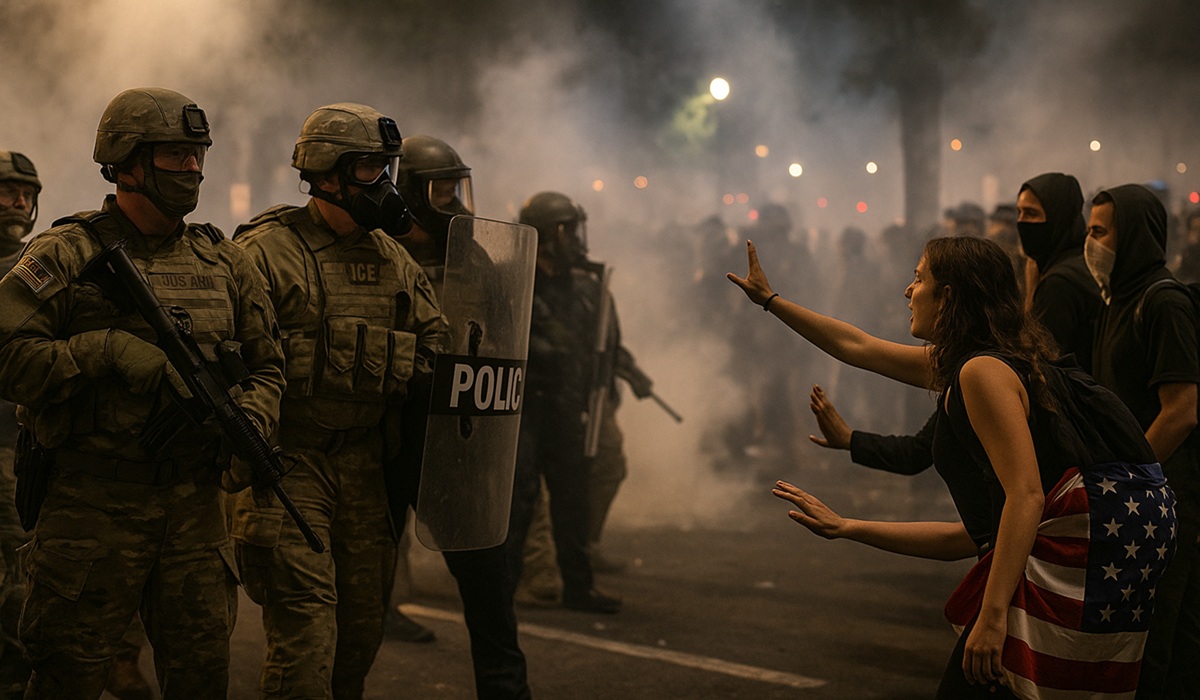Democrat Catelin Drey Stuns Iowa: Flip in Trump Country
- Kingston Bailey
- Trending News
- August 27, 2025

Image Credit: DLCC
Catelin Drey’s victory over Christopher Prosch in Iowa’s Senate District 1 is a genuine political shock—and its aftershocks will be felt well beyond Sioux City. In a district Donald Trump carried by roughly double digits in 2024, a Democrat just won a low-turnout special election with a clear majority, ending Republicans’ two-thirds grip on the Iowa Senate. That’s not a blip. It’s a data point that disrupts assumptions about the Midwest, about MAGA-era durability in places that looked safely red, and about how affordability and pocketbook issues—turbocharged by the real-world effects of tariffs—are cutting through.
Why this counts as a major upset starts with the map and the math. District 1 sits in deep-red northwest Iowa, rooted in Woodbury County. Republican Sen. Rocky De Witt last held the seat before his passing prompted this August 26 special. Recent presidential numbers gave the GOP comfort: Trump won the area by around 11 points, and Republicans have enjoyed a lopsided advantage in the state legislature since 2022. Drey didn’t just eke it out; she finished at roughly 55 percent, flipping a seat that was supposed to be out of reach for Democrats in an off-date election that typically favors the party with stronger habitual turnout. That is the definition of a “how did that happen?” result.
How Drey carried a Trump-leaning district comes down to message discipline and opponent contrast. Drey campaigned as a pragmatic local mom and professional focused on affordability, public schools, and giving “working Iowans” a fair shake—an emphasis that resonates when grocery, housing, and childcare costs dominate kitchen-table talk. By contrast, Prosch arrived to the race wearing national culture-war armor; his past comparison of abortion policy to the Holocaust and alignment with election denial rhetoric gave Democrats a clean lane to argue that he was out of step with local priorities. In a low-turnout contest, those distinctions matter. The campaign also benefited from an unusually muscular field operation for a special, with national and state Democrats surging volunteers and resources to the district.
Affordability and tariffs formed an important subtext. The MAGA economic brand leans on aggressive tariffs, which function in practice as taxes on importers that can flow through to consumers and local businesses—hitting everything from canning and bottling to farm equipment inputs. In a region with manufacturers, food processors, and small retailers that run on thin margins, cost pass-throughs are not theoretical. Democrats in the area hammered that point in recent messaging, framing tariffs as a driver of higher prices at the register. That framing, paired with Drey’s cost-of-living pitch, helps explain how a Democrat could peel off enough right-leaning, price-sensitive voters to overcome the district’s red tilt in a special election.
What the flip means institutionally is straightforward but consequential. Republicans still control the Iowa Senate, but Drey’s win breaks their supermajority, moving the balance to 33–17. That two-thirds threshold matters most on confirmations and any business that requires supermajority assent; without it, the majority party cannot simply steamroll nominations or certain parliamentary moves without at least some bipartisan cooperation. In a capitol that has grown accustomed to one-party muscle, even a small procedural lever can change behavior, slow the fastest trains, and force more negotiation in committee.
This is also the second time in recent months that Iowa Democrats have won a state Senate special, the earlier one being Mike Zimmer’s January flip. It’s unusual to see back-to-back Democratic breakthroughs in a chamber that has been overwhelmingly Republican; taken together, they suggest a softening of the MAGA floor in places where the GOP once counted on automatic margins. Two data points don’t guarantee a trend, but they do earn the label “momentum,” especially in a state political environment that, since 2016, has often delivered the opposite.
The national read is where this result bites hardest. Midterms are next year, and special elections are often treated as tea leaves. The clearest signal from District 1 is that MAGA-branded conservatism, heavy on cultural grievance and light on household economics, underperforms when voters are focused on costs—rent, childcare, groceries—and when the Republican nominee carries baggage that repels moderate parents and suburban women. If Democrats can replicate Drey’s coalition—anchoring campaigns in affordability, schools, and basic competence while keeping the spotlight on GOP extremism—the map of plausible targets widens, not just in Iowa but across the Upper Midwest and parts of the interior West.
For MAGA Republicans, there’s a strategic fork in the road. One path doubles down on nationalized fights and bets that base turnout in even-year, high-salience elections will reassert the old partisan gravity. The other path acknowledges the evident penalty for candidates who appear focused on culture-war maximalism while voters are hunting for relief on everyday costs and tariff-linked price spikes. If party strategists can’t or won’t recalibrate, a result like District 1 won’t be treated as a fluke by donors and operatives; it will be entered into the forecast as a warning about candidate quality, message mix, and the drag created by high-profile, polarizing national figures.
There’s also the Trump factor. Even if you treat this as a localized contest, it happened in a district Trump won comfortably, and the GOP nominee campaigned inside the MAGA brand. Republicans can argue low conservative turnout or Democratic overspending, and some will. But if a deep-red seat can flip in August while Trump remains the face of the party, that suggests his coattails are shorter than they looked two cycles ago—especially when the conversation is about what families pay this month, not what they fear might happen in schools a year from now. With dozens of state legislative battlegrounds on the board in 2026, that’s an unwelcome data point for Republicans counting on inertia to save marginal seats.
So what does this mean, in plain terms? It means Democrats just proved they can win on hostile turf when they keep the campaign local, prosecute affordability, and force Republicans to defend tariffs and culture-war excesses. It means Iowa’s upper chamber can no longer be run like a one-party rubber stamp. It means the second Democratic special-election win of the year isn’t an accident—it’s evidence of an electorate that will move when offered a credible alternative. And it means that, heading toward the 2026 midterms, the MAGA brand looks newly vulnerable in places that, until very recently, Republicans treated as theirs by default.








